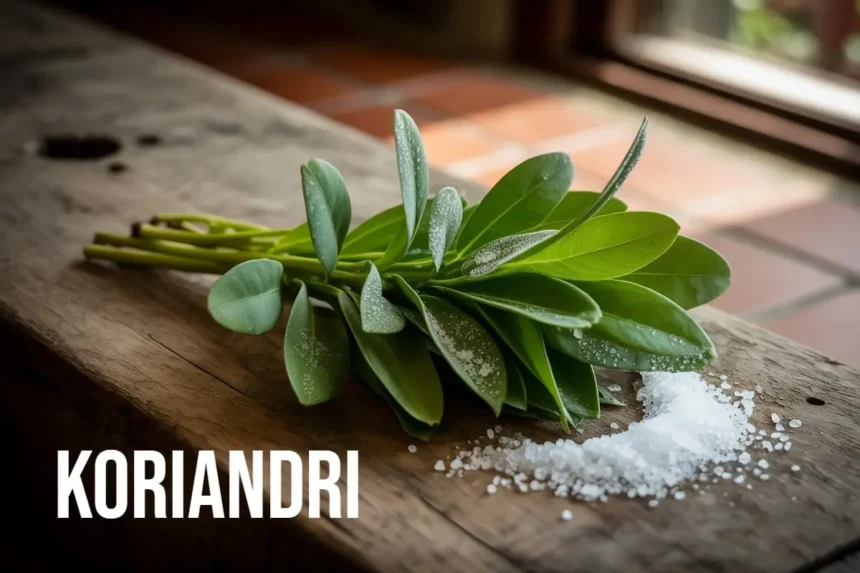Across cultures and centuries, certain elements of daily life become more than ordinary—they evolve into symbols of identity, memory, and nourishment. Koriandri is one such example. Known to many as a spice, herb, or cultural marker, it has long shaped the ways people eat, heal, and connect.
Yet Koriandri is not simply about taste. It represents a blend of tradition and innovation, of how ancient practices meet modern lifestyles. From its historical presence in trade routes to its role in today’s wellness trends, It reflects resilience, diversity, and human ingenuity. This article explores its meaning, impact, and relevance in our rapidly changing world.
What is Koriandri?
It can be understood as both a tangible ingredient and a symbolic idea. On one level, it is the aromatic herb found in countless kitchens, enhancing curries, salads, and soups. On another, it symbolizes the interconnectedness of cultures—how a single plant traveled continents and became part of many identities.
Unlike fleeting trends, It has stayed relevant for thousands of years because of its adaptability. It fits into health remedies, culinary experiments, and even cultural rituals. This ability to remain versatile is what makes it a timeless element.
Why Koriandri Matters Today
In a fast-paced world, food and culture serve as anchors. It matters because it is not just about flavor but about belonging. It bridges communities, offering comfort to one person and exotic adventure to another.
On a global scale, it reflects the importance of biodiversity, sustainable farming, and the preservation of culinary heritage. In an age of industrialized food, It reminds us of the value of natural, authentic, and mindful consumption.
Case Study: Koriandri in Local Farming
A farming collective in North Africa provides a strong example of Koriandri’s significance. Faced with droughts and soil challenges, farmers turned to cultivating coriander—a crop known for resilience and multiple uses. By adopting sustainable irrigation and crop-sharing systems, they created both economic stability and cultural pride.
The result was striking. Farmers gained better income, communities had access to affordable herbs, and local cuisines thrived. This case shows how Koriandri is more than a spice—it can anchor livelihoods and preserve traditions in difficult times.
Benefits
It brings layered benefits that extend far beyond taste:
- Health and Wellness: Known for digestive and anti-inflammatory properties.
- Cultural Identity: Strengthens culinary traditions and rituals worldwide.
These benefits show why Koriandri remains deeply rooted in both kitchens and cultural memory.
Challenges Associated with Koriandri
Despite its popularity, It is not without challenges. Some individuals dislike its taste due to genetic sensitivity. Farmers face climate stress that threatens its cultivation. In markets, rising demand can sometimes lead to unfair trade practices.
These hurdles highlight the importance of sustainable farming, fair trade, and education about biodiversity. Without these, It could become a fragile resource rather than a resilient one.
How to Incorporate Koriandri in Daily Life
It is not just for chefs or health experts—it is accessible to everyone.
- Cooking: Add fresh leaves to salads, soups, or curries for natural flavor.
- Wellness: Use seeds in teas or remedies for digestion and relaxation.
These small steps turn ordinary meals into experiences of health and heritage. They also connect people to a larger global story of shared culinary culture.
Koriandri as a Cultural Connector
Beyond its physical use, It functions as a bridge. Migrants carry it across borders, using it to recreate flavors of home. Festivals celebrate it as part of heritage dishes. In literature and folklore, it often symbolizes prosperity, healing, and continuity.
This cultural weight makes Koriandri more than just a herb—it is a living archive of memory and meaning.
Future
Looking ahead, It may play a bigger role in sustainable living and health-conscious diets. With rising interest in plant-based lifestyles, natural remedies, and eco-friendly farming, it fits perfectly into global trends.
Imagine cities where rooftop gardens grow Koriandri for local communities, or wellness industries developing new natural therapies around it. The future suggests not decline but renewal, where ancient wisdom finds a home in modern progress.
Conclusion
At its core, It is a story of resilience and connection. It reminds us that flavor, culture, and wellness are not separate but intertwined. By valuing it, we also value biodiversity, heritage, and sustainable living.
FAQs
What is Koriandri?
It is another name for coriander, a versatile herb and spice used globally in food, medicine, and culture. It symbolizes the blending of flavor, tradition, and well-being across generations.
Why is Koriandri important?
It is important because it connects people to their heritage while promoting healthy lifestyles. From enhancing meals to supporting sustainable farming, it plays a key role in cultural and ecological balance.
How is Koriandri used in daily life?
People use Koriandri in cooking to add aroma and taste, in natural remedies for digestion, and in rituals to preserve cultural identity. Its versatility makes it a daily essential across the world.
What challenges affect Koriandri today?
Climate change, water scarcity, and unfair trade practices threaten its cultivation. In addition, genetic differences cause some people to dislike its taste, creating both cultural and agricultural challenges.
What is the future of Koriandri?
The future looks promising as it aligns with rising trends in plant-based diets and eco-friendly living. With sustainable farming and innovation, It can remain a cornerstone of health and culture.







